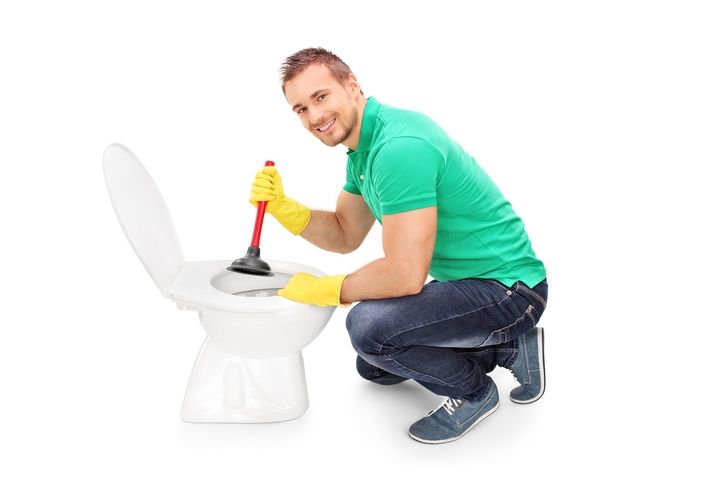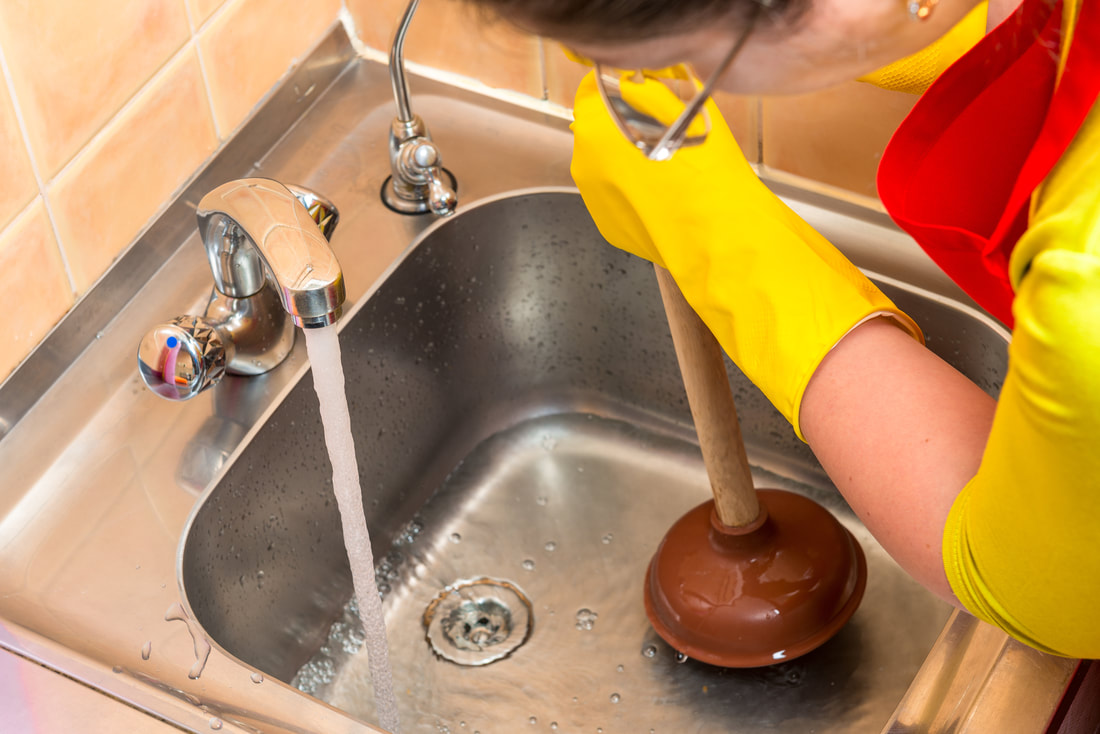Have you been trying to find advice around A Guide to Plungers (and How to Use Them)?

Introduction
Proper upkeep of household drains is necessary for protecting against clogs and ensuring smooth water circulation. Among the secret devices in every homeowner's toolkit is the plunger, together with numerous drain cleaners developed to deal with persistent obstructions properly. This article explores exactly how to utilize plungers and drainpipe cleansers successfully to maintain your drains pipes streaming easily.
Section 1: Comprehending Plungers
Types of Plungers
There are several types of bettors readily available, each made for various kinds of drains and blocks. The most typical types consist of cup plungers, flange bettors, and accordion plungers.
Just How Plungers Job
Plungers work with the principle of developing stress and suction to dislodge obstructions. When appropriately used over a drain, they create a vacuum cleaner that can pull out particles or break up obstructions.
Choosing the Right Bettor
Selecting the ideal plunger depends upon the type of drainpipe and the nature of the clog. Cup bettors are excellent for sinks and bathtubs, while flange bettors are much better fit for commodes because of their style.
Usual Mistakes with Plungers
Preventing these errors makes certain effective plunging: improper seal around the drain, insufficient force, and unclear bordering particles.
Section 2: Making Use Of Plungers Efficiently
Prep work
Prior to plunging, ensure the bettor covers the drain completely and develops a tight seal. Clear any noticeable particles around the drain opening.
Technique
Beginning with mild plunging activities to construct suction. Rise pressure gradually, making use of a stable rhythm. Repeat as required till the drain removes.
Troubleshooting Tips
If diving doesn't function, try adjusting the seal, using oil jelly for a far better seal, or utilizing a various kind of plunger.
Area 3: Recognizing Drain Cleansers
Types of Drain Cleaners
Drain pipes cleaners can be chemical or chemical. Chemical cleaners use solid chemicals to liquify obstructions, while chemical cleaners utilize natural enzymes to break down organic matter.
How Drainpipe Cleaning Company Work
Chemical cleaners respond with clogs to liquify them, while chemical cleaners break down natural products like hair and oil without damaging pipes.
Safety Considerations
Constantly put on handwear covers and eye security when utilizing chemical drain cleansers. Guarantee adequate ventilation and follow producer instructions very carefully.
Eco-Friendly Alternatives
Think about utilizing vinegar and cooking soft drink or enzyme-based cleansers for environment-friendly alternatives that are much safer for pipes and the setting.
Area 4: Making Use Of Drain Cleansers Efficiently
Application Methods
Put chemical cleaners directly right into the drain opening. Enable them to help the suggested time prior to flushing with warm water. Enzymatic cleaners need to rest overnight.
Preventative measures
Prevent blending various kinds of cleaners, as this can create harmful fumes. Never utilize chemical cleansers combined with a bettor, as spilling can happen.
Taking Care Of Persistent Blockages
For persistent obstructions, consider using a plumbing snake or calling a professional plumbing professional to stop damages to pipelines.
Conclusion
In conclusion, understanding just how to make use of plungers and drain cleaners properly is crucial for maintaining healthy and balanced plumbing systems. By choosing the right tools and strategies, house owners can deal with small blockages and stop major plumbing concerns down the line.
How To Properly Use A Plumbing Snake To Clear Drains
When any drain clogs in our home arise, we tend to gravitate toward the plunger and little else. In cases where the plunger and its vacuum-created pressure are not able to clear clogs, many immediately move to harmful chemicals or simply call their plumber to fix the issue.
we’re happy to help with all drain cleaning needs and concerns. This includes informing you on a few other home remedies you may have at your disposal for minor to moderate clogs, one of which is the use of a plumbing snake. Many people have never used one of these before – let’s go over the steps to take when your drain clogs and you have a plumbing snake available.
Attempt Plunger Use
The first step here, as we noted above, should indeed be to grab your plunger when you notice a drain clog and attempt to resolve it this way. If you’re unsure how to use a particular type of plunger, our plumbers can answer any questions you have. If this doesn’t do the trick, however, you move on to the snake.
Locate And Prepare Snake
A plumbing snake is a metal or plastic device that’s generally about a quarter of an inch thick. It’s design with significant extensions, meant to reach down into your clogged drain and push the clog out. Snakes also contain drain augers that will latch onto and push stubborn blockages.
If your plunger doesn’t clear a clog, locate your snake and bring it to the drain in question. We also recommend keeping a bucket nearby to collect the clog once you pull it out, plus we’d advise wearing goggles and possibly protective gloves.
Feed Snake
Once you’re ready to go, feed the snake slowly down the drain, using the crank device it comes with to keep it moving until it finds the clog. Once this happens, much of the clog will be latched onto the coil so you can pull it out, while the rest will simply break up and flow downward.
Detach Debris
Remove the snake slowly from the drain, and once you’ve done so, pick off any debris that’s stuck to the coil. This is another area where wearing gloves is a must.
Flush Drain
Finally, take a few minutes to ensure the snake has done its job correctly. If you’ve been using it on a toilet, flush the toilet a couple times and make sure everything flows well. If you’ve used it on a different drain, flush it with some room temperature water.
https://www.mybuddytheplumber.com/blog/how-to-properly-use-a-plumbing-snake-to-clear-drains/

Application Methods
Put chemical cleaners directly right into the drain opening. Enable them to help the suggested time prior to flushing with warm water. Enzymatic cleaners need to rest overnight.
Preventative measures
Prevent blending various kinds of cleaners, as this can create harmful fumes. Never utilize chemical cleansers combined with a bettor, as spilling can happen.
Taking Care Of Persistent Blockages
For persistent obstructions, consider using a plumbing snake or calling a professional plumbing professional to stop damages to pipelines.
Conclusion
In conclusion, understanding just how to make use of plungers and drain cleaners properly is crucial for maintaining healthy and balanced plumbing systems. By choosing the right tools and strategies, house owners can deal with small blockages and stop major plumbing concerns down the line.
How To Properly Use A Plumbing Snake To Clear Drains
When any drain clogs in our home arise, we tend to gravitate toward the plunger and little else. In cases where the plunger and its vacuum-created pressure are not able to clear clogs, many immediately move to harmful chemicals or simply call their plumber to fix the issue.
we’re happy to help with all drain cleaning needs and concerns. This includes informing you on a few other home remedies you may have at your disposal for minor to moderate clogs, one of which is the use of a plumbing snake. Many people have never used one of these before – let’s go over the steps to take when your drain clogs and you have a plumbing snake available.
Attempt Plunger Use
The first step here, as we noted above, should indeed be to grab your plunger when you notice a drain clog and attempt to resolve it this way. If you’re unsure how to use a particular type of plunger, our plumbers can answer any questions you have. If this doesn’t do the trick, however, you move on to the snake.
Locate And Prepare Snake
A plumbing snake is a metal or plastic device that’s generally about a quarter of an inch thick. It’s design with significant extensions, meant to reach down into your clogged drain and push the clog out. Snakes also contain drain augers that will latch onto and push stubborn blockages.
If your plunger doesn’t clear a clog, locate your snake and bring it to the drain in question. We also recommend keeping a bucket nearby to collect the clog once you pull it out, plus we’d advise wearing goggles and possibly protective gloves.
Feed Snake
Once you’re ready to go, feed the snake slowly down the drain, using the crank device it comes with to keep it moving until it finds the clog. Once this happens, much of the clog will be latched onto the coil so you can pull it out, while the rest will simply break up and flow downward.
Detach Debris
Remove the snake slowly from the drain, and once you’ve done so, pick off any debris that’s stuck to the coil. This is another area where wearing gloves is a must.
Flush Drain
Finally, take a few minutes to ensure the snake has done its job correctly. If you’ve been using it on a toilet, flush the toilet a couple times and make sure everything flows well. If you’ve used it on a different drain, flush it with some room temperature water.
https://www.mybuddytheplumber.com/blog/how-to-properly-use-a-plumbing-snake-to-clear-drains/

We hope you enjoyed our part on . Thanks a ton for taking a few minutes to read through our blog post. So long as you enjoyed reading our blog post please don't forget to pass it around. Thank you so much for taking the time to read it.
Visit Homepage